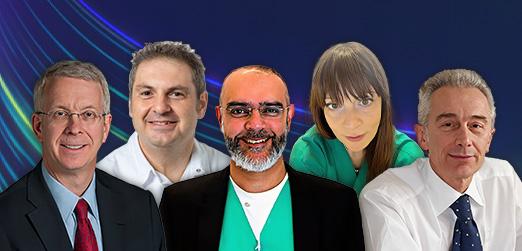- Home
- Hybrid Ablation – AF and Beyond
Hybrid Ablation – AF and Beyond
- Heart Rhythm
Available Credit:
- 1.00
Course Published On:
Course Expiry Date:

Overview
Under the expert moderation of Prof Harry Crijns (Maastricht, NL), a leading international faculty comprising Prof Carlo de Asmundis (Brussels, BE), Prof Mark La Meir (Brussels, BE) and Dr Ashley Nisbet (Bristol, UK) examine which arrhythmias could benefit from a hybrid approach, review the practical implementation of hybrid ablation in IST, and consider learnings from persistent and long-standing AF.
With the applications of hybrid ablation stretching beyond the traditional AF core, this insightful programme (recorded at EHRA 2023 in Barcelona) is both evidence-based and practical with case studies demonstrating real-world applications. The session also considers the knowledge and team composition requirements to enhance effectiveness when administering the hybrid procedure for optimal long-term patient outcomes.
Support Statement
This programme is supported by an unrestricted educational grant from AtriCure Inc.
Disclosure
In compliance with EBAC guidelines, all speakers/chairpersons participating in this programme have disclosed or indicated potential conflicts of interest which might cause a bias in the presentations.
The Organising Committee/Course Director is responsible for ensuring that all potential conflicts of interest relevant to the event are declared to the audience prior to the CME activities.
Terms & Conditions
Radcliffe Medical Education requires contributors to our CME programmes to disclose any relevant financial relationships that have occurred within the past 12 months that could create a conflict of interest. These will be identified in the faculty section if applicable.
The session, ‘Hybrid Ablation – AF and Beyond’ is accredited by the European Board for Accreditation of Continuing Education for Health Professionals (EBAC) for 1 hour of external CME credits.
Each participant should claim only those hours of credit that have actually been spent in the educational activity. EBAC works according to the quality standards of the European Accreditation Council for Continuing Medical Education (EACCME), which is an institution of the European Union of Medical Specialists (UEMS).
Through an agreement between the European Board for Accreditation of Continuing Education for Health Professionals and the American Medical Association, physicians may convert EBAC External CME credits to AMA PRA Category 1 Credits™. Information on the process to convert EBAC credit to AMA credit can be found on the AMA website.
Instruction to Participants
There is no fee for taking part in this online learning activity.
Activities are designed to be completed within 60 minutes and must be completed by the registered user. Physicians should only claim credits for time spent on the activity. To successfully earn credit, participants must complete the activity in full in the indicated time frame.
To complete the course and claim certification participants must:
Read the course outline information supplied and complete pre-test questions if supplied prior to starting the activity. Users must read and study the activity in its entirety before completing the post-test questions.
Your results will be automatically saved and if a pass score is achieved (where applicable), you may be eligible to claim credit for the activity and receive a certificate of completion.
Target Audience
- Electrophysiologists
- Cardiologists
- Cardiac surgeons
- Healthcare professionals
Learning Objectives
Upon completion of this activity, participants will be able to:
- Identify arrhythmias other than atrial fibrillation that may benefit from hybrid ablation
- Summarise the existing evidence base for hybrid ablation in IST, POTS and Brugada Syndrome
- Identify patients who may benefit from a hybrid ablation approach
- Recall existing RCT and real-world evidence supporting the use of hybrid ablation in AF
Module |
Title |
Duration |
Speakers |
|---|---|---|---|
| 1 | Chair’s Welcome & Which Arrhythmias Could Benefit From a Hybrid Approach? | 18m 39s | Harry Crijns Carlo de Asmundis |
| 2 | Hybrid Ablation in IST: A Case Study | 12m 54s | Mark La Meir |
| 3 | What Can We Learn From Persistent and Long-standing Persistent AF? | 14m 55s | Ashley Nisbet |
Chair’s Welcome & Which Arrhythmias Could Benefit From a Hybrid Approach?
Duration: 18m 39s
Speakers: Harry Crijns Carlo de Asmundis
What Can We Learn From Persistent and Long-standing Persistent AF?
Duration: 14m 55s
Speakers: Ashley Nisbet
Chair
Speaker




